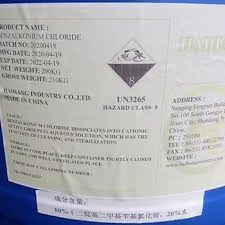cationic polyacrylamide uses
Cationic Polyacrylamide Versatile Uses and Applications
Cationic polyacrylamide (CPAM) is a synthetic polymer widely recognized for its versatile applications across various industries. As a derivative of polyacrylamide, CPAM features positively charged functional groups, which enable it to interact effectively with negatively charged particles in different environments. This unique characteristic underpins its valued role in numerous applications, ranging from water treatment to agriculture and beyond.
Water Treatment
One of the most significant applications of cationic polyacrylamide is in water treatment processes. CPAM acts as a flocculant, promoting the agglomeration of suspended particles in water, which facilitates their removal. In municipal water treatment facilities, CPAM is utilized to enhance the sedimentation of sludge and solids during the purification process. This leads to cleaner effluents and lesser environmental impacts. Moreover, CPAM is also employed in industrial wastewater treatment to improve the removal of contaminants, such as heavy metals and organic pollutants, thereby ensuring compliance with environmental regulations.
Papermaking
Another critical sector where cationic polyacrylamide is extensively used is the papermaking industry. CPAM serves as a retention aid and a drainage agent, significantly enhancing the efficiency of the paper production process. By promoting the retention of fine fibers and fillers during the papermaking process, CPAM contributes to improved paper quality and increased production rates. Additionally, it aids in reducing water consumption and energy costs by enhancing water drainage from the paper pulp.
Textile Industry
cationic polyacrylamide uses

In the textile sector, CPAM is leveraged for its excellent adhesion properties. It is utilized in dyeing and finishing processes as a fixative that helps bind dyes and chemicals onto fabrics. This enhances the durability of colors and improves the overall quality of the textiles. The use of cationic polyacrylamide also reduces the amount of dye lost during washing, thereby minimizing environmental impact and increasing the sustainability of textile manufacturing.
Soil Conditioning and Agriculture
Cationic polyacrylamide's utility extends into agriculture as well, particularly in soil conditioning. When used as a soil stabilizer, CPAM improves soil structure and increases water retention capacity. This proves especially beneficial in arid regions where water scarcity challenges crop cultivation. By helping to prevent soil erosion and enhancing soil fertility, cationic polyacrylamide contributes to healthier plant growth and improved agricultural yields.
Oil and Gas Industry
The oil and gas industry also benefits from the unique properties of cationic polyacrylamide. In the process of drilling, CPAM is used as a viscosifying agent, increasing the mud viscosity and enhancing the efficiency of drilling operations. This, in turn, ensures better stabilization of boreholes and minimizes the risk of environmental contamination from drilling fluids. Additionally, CPAM is employed during hydraulic fracturing to control fluid loss and improve the efficiency of the fracturing process.
Conclusion
In conclusion, cationic polyacrylamide is a multifaceted polymer with a diverse range of applications across several industries. From enhancing water treatment processes to improving agricultural practices and optimizing production in the textile and oil sectors, CPAM continues to prove its value as a versatile and effective material. As industries evolve and the need for sustainable practices grows, the demand for cationic polyacrylamide is expected to remain robust, driven by its effectiveness and adaptability in addressing various challenges. With ongoing research and development, the potential uses of CPAM may further expand, solidifying its role as an indispensable resource in modern industrial practices.
-
Understanding Polycarboxylic Acids: Properties, Applications, and Future PotentialNewsJul.28,2025
-
Scale Inhibitor Explained: How to Protect Your System from Limescale and Hard Water DamageNewsJul.28,2025
-
Scale and Corrosion Inhibitors: Essential Chemicals for Industrial Water System ProtectionNewsJul.28,2025
-
Polyaspartic Acid: A Biodegradable Polymer for Sustainable ChemistryNewsJul.28,2025
-
Isothiazolinones: A Versatile Antimicrobial Class with Industrial Power and Regulatory ChallengesNewsJul.28,2025
-
A Deep Dive into 2-Phosphonobutane-1,2,4-Tricarboxylic Acid (PBTC)NewsJul.28,2025





